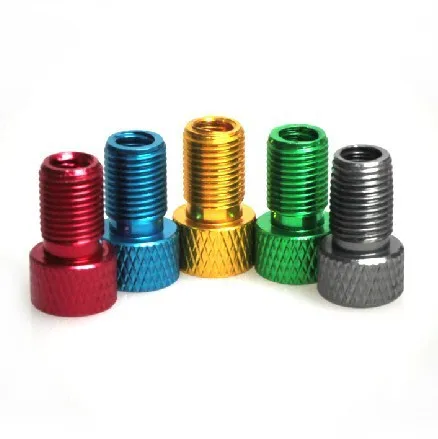It is actually a simple and painless task to inflate bicycle tires, as long as you have the right tools. You simply have to identify the type of valve you are using, follow the tips below, and pump accordingly.
A Schrader valve is also known as American valve or car valve. The valve stem is surrounded by a threaded valve core. In order to press down on the stem, you have to use a tool like a cap of a pen or just your thumbnail. Typically, Schrader valves are wider in diameter and shorter than Presta or French valves. They are usually used in cars, less expensive motor bikes and bicycles.
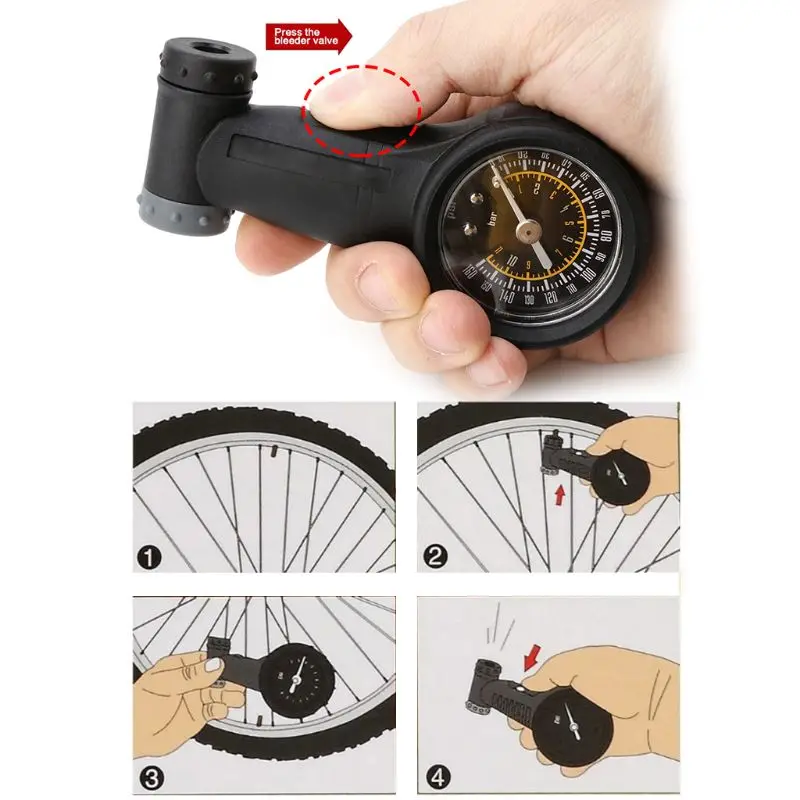
Note: To deflate a tire with a Schrader valve, just press on the springy valve stem with your fingernail or other small tool until all air escapes.
To be spared from hassles caused by punctured tires, consider getting a bicycle with slimed tubes with self-repairing flat prevention system. Visit Zize Bikes, the maker of extra strong custom built bicycles for every body, including bicycles for heavy riders that can support riders up to 550 pounds.
❚ The products mentioned in this article are selected or reviewed independently by our journalists. When you buy through links on our site we may earn an affiliate commission, but this never influences our opinion.
It might be a basic thing, but being able to pump up your bike’s tyres is an essential skill for any cyclist.
A lot of you will already know how to do this, but for those who don’t, the different valve types, pumps and, more importantly, what pressure to pump your tyre can be a bit overwhelming. Let us guide you through the process.
Pneumatic tyres were invented to get over the bone-jarring ‘ride-quality’ of solid wheels.
The air inside acts as a spring, providing suspension for you and allowing the tyre to conform to the terrain providing better traction and grip.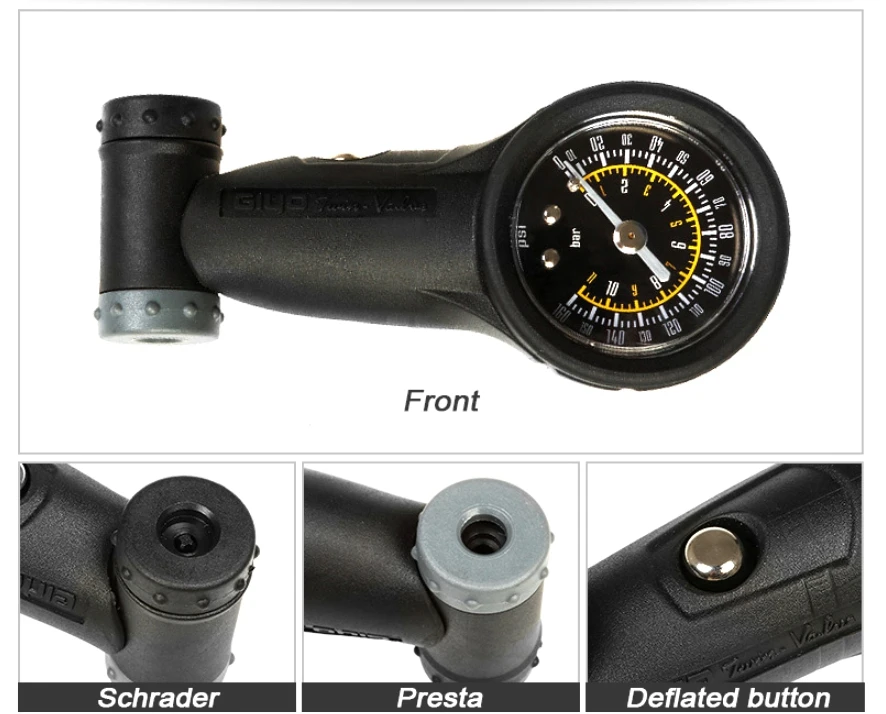
Pumping up your tyres is a quick job that can easily improve your enjoyment while riding. Running the wrong tyre pressure will negatively affect the way that your bike rides and can also make your bike more prone to punctures.
If you’ve never repaired a puncture before, you might not have considered how your tyres hold air inside.
The vast majority of bikes will use an inner tube. This is a doughnut shaped airtight tube that sits inside the tyre, with a valve for pumping it up that you see on the outside.
The tyre, when inflated by the tube, is what grips the ground and provides protection from punctures.
You may have heard of tubeless tyres, which forgo a tube and use a special rim and tyre to seal air without the need for a tube. These usually require tubeless sealant inside, which is a liquid that plugs any points where air is escaping.
Tubeless tyres are more commonly found in mountain biking, but the technology is migrating to road bikes.
The tubeless sealant also plugs punctures, and no tube means a much lower risk of pinch flats – that’s when your inner tube is pinched by the rim, causing a puncture. Tubeless tyres can, therefore, be run at lower pressures than those with an inner tube setup, for improved comfort, speed and traction.
At the very high end, you also get tubular tyres. This is essentially a tyre with the tube sewn into it, but they are rarely seen or used outside of professional racing.
Inflating your tyres to the correct pressure is an essential part of bike maintenance.Oli Woodman / Immediate Media
Running your tyres at either too high or too low a pressure can be potentially dangerous, as well as negatively impact the handling of your bike.
We’ll discuss later what the correct pressure is, but for the moment let’s look at possible problems.
An under-inflated tyre will rob your efficiency and leave you susceptible to annoying punctures.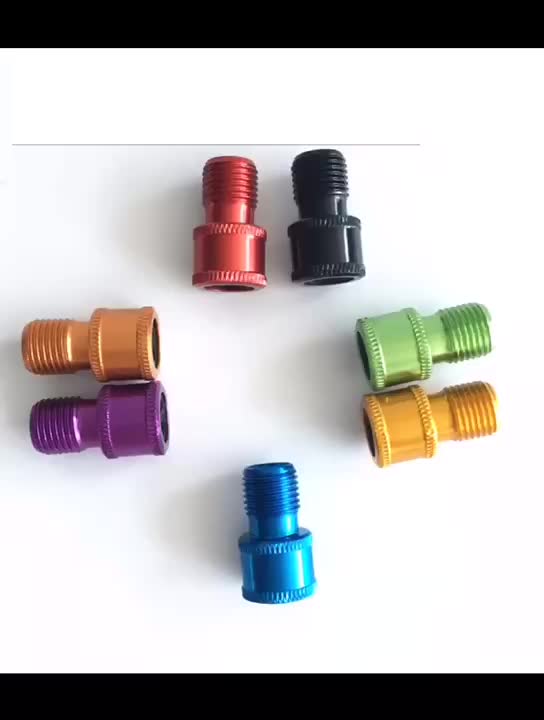 Oli Woodman / Immediate Media
Oli Woodman / Immediate Media
If you run your tyres at too low a pressure, the tyre can wear prematurely. Excessive flexing in the sidewall can lead to the casing cracking and the tyre becoming fragile. This could eventually lead to a blowout.
Excessively low pressures also increase your susceptibility to punctures and may even result in your tyres literally rolling off the rim if you corner at speed (the pressure inside is what holds your tyre on the rim).
Damage can also be caused if the tyre deflects all the way down to the rim. This can result in dents or cracking, potentially compromising your wheel and resulting in an expensive replacement.
Conversely, running too high a pressure could result in your tyre blowing off the rim with explosive consequences. That pressure can also squeeze the wheel because if it’s too high the compressive force on the wheel can be too high.
In terms of handling, a low pressure can result in compromised handling with the tyre squirming under load.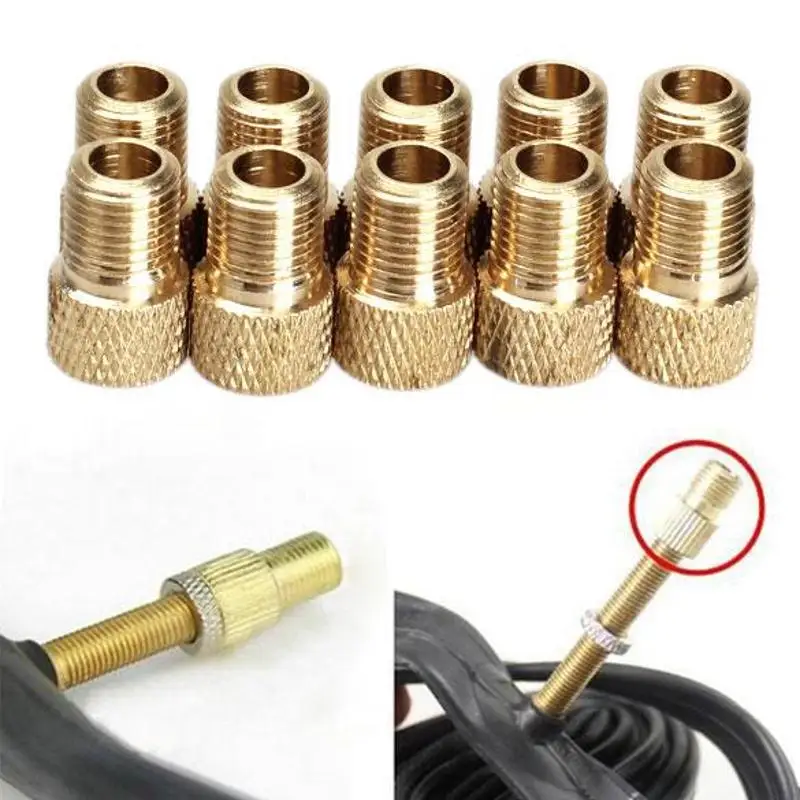 Your bike will feel difficult to control, slow and sluggish.
Your bike will feel difficult to control, slow and sluggish.
On the other hand, too high pressure can result in reduced grip and a harsh ride, leading to fatigue and in turn impacting handling.
There are two likely reasons why your tyre is flat. Either you have a puncture or your tyre has just deflated over time.
If you have a puncture, we’ve put together a comprehensive guide on how to fix a puncture.
Glueless patches are great for a quick fix, while a more traditional kit is a versatile option when you have a bit more time.
All tyre systems will leak air slowly because tubes aren’t completely airtight. For example, standard butyl tubes hold air fairly well compared to lightweight latex tubes, which leak comparatively quicker. Even tubeless setups will slowly leak air.
Old tubes will leak more air than new ones, so if yours haven’t been replaced in a while they may be worth looking at. Less likely, but also a possibility (especially on older tubes), is that the valve is no longer sealing properly.
The best way to check what’s going on is to try pumping up the tyre. If it holds air then there’s likely nothing more you need to do. If it doesn’t, then you likely have a puncture.
If it leaks air slowly overnight, either you have a slow puncture or simply an old tube that needs replacing.
The first thing you’ll need to know before pumping up your tyre is what valve type is fitted.
The valve is the key part that keeps air in the tyre, but also lets you inflate (or deflate) the tyre.
The Schrader valve is also used for car tyres.Oli Woodman / Immediate Media
Schrader valves are more common on lower-end bikes and, in the past, mountain bikes. The same valves are used on car tyres.
The valve assembly is a hollow tube with a sprung valve that closes automatically and screws into the external body. A pin extends up from the valve and is usually flush with the end of the outer tube.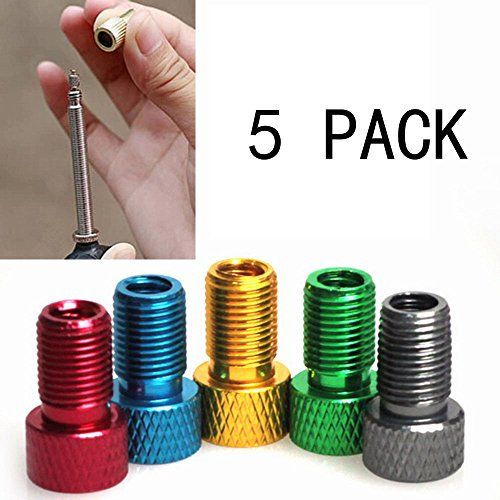 This pin can be depressed to let air out.
This pin can be depressed to let air out.
The dust cap on Schrader valves is an important part of the design that can help fully seal the valve if it is not completely air-tight. It essentially provides a secondary ‘backup’ seal.
The sprung design of the valve is a little susceptible to contamination from dirt or grit so it’s important to protect it too.
Presta valves such as this one are longer and narrower than the Schrader type valve.Oli Woodman / Immediate Media
You will only find Presta valves on bicycles.
They originated on road bikes where the narrower valve (6mm vs 8mm for a Schrader) meant a smaller valve hole (typically the weakest part of a rim) on narrow road wheels.
Nowadays they are seen on both mountain bikes and road bikes. Rather than use a spring, the valve is secured with a nut that holds it closed, though the valve itself is sealed ‘automatically’ when pressure inside the tyre pushes it shut.
With a Schrader valve, you can simply press the pin to release air, but with a Presta valve you first have to unscrew the little locknut. Don’t worry about the nut coming off the end of the valve body because the threads are peened to stop that happening.
Don’t worry about the nut coming off the end of the valve body because the threads are peened to stop that happening.
There seems to be a myth that Presta valves deal with high pressures better – this probably isn’t true considering there are Schrader valves that can withstand many hundreds of psi (way more than you’ll ever need in your tyre).
Presta valves are definitely a little more delicate than Schrader valves, though. It’s quite easy to knock the threaded internal valve body and bend or break it, so a bit more care needs to be taken. However, valve cores are easily replaceable with standard tools.
In comparison, on Schrader valves, this requires a proprietary tool.
Presta valves may come with a lockring that secures the valve body against the rim. This can make them a little easier to inflate. The dust cap is not essential to seal it, but helps keep the valve clean.
The only other type of valve you may come across is a Dunlop (also known as Woods) valve. This has a similar base diameter to a Schrader valve, but can be inflated with the same pump fitting as a Presta valve.
This has a similar base diameter to a Schrader valve, but can be inflated with the same pump fitting as a Presta valve.
These are very popular on town/upright bikes in Europe and elsewhere in the world, but you’re very unlikely to come across one in the UK or in the US.
A tubeless valve can be difficult to distinguish from a regular Presta valve.Oli Woodman / Immediate Media
Valves for tubeless setups are attached directly to the rim, rather than being part of an inner tube.
More often than not, they are Presta-type, but Schrader ones do exist.
Oli Woodman / Immediate Media
If you’ve got a Schrader type valve, such as the one shown above, then the first thing you need to do is remove the dust cap (if there is one in place).
Oli Woodman / Immediate Media
Simply unscrew the cap anticlockwise to reveal the valve.
Oli Woodman / Immediate Media
Now attach the head of your pump.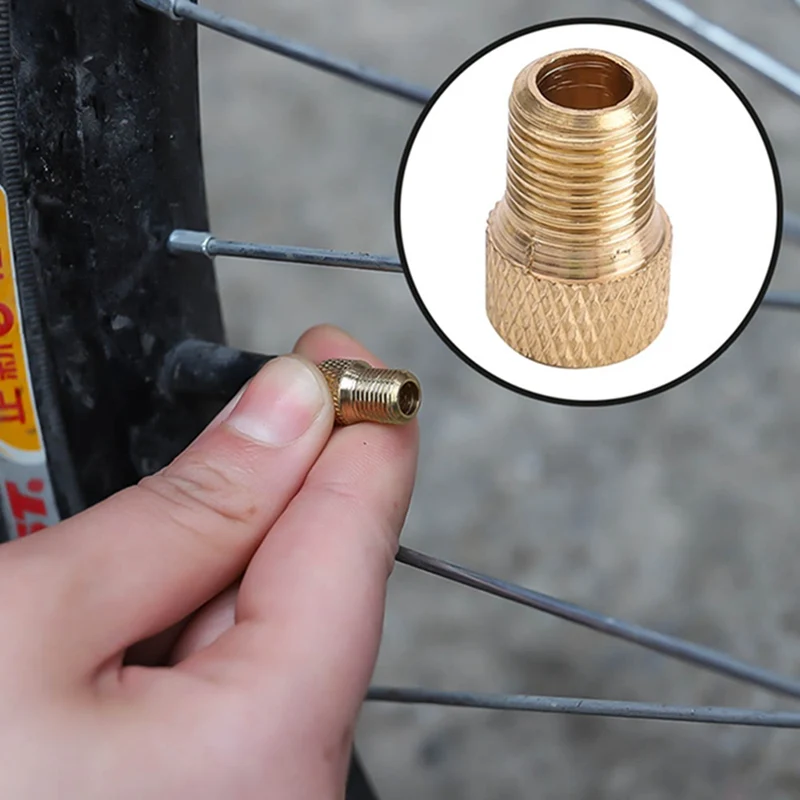
Oli Woodman / Immediate Media
Inflate the tyre to a value between the minimum and maximum stated on the tyre sidewall and remove the pump. You’re done!
Oli Woodman / Immediate Media
If your bicycle has a Presta type valve such as this one then you will first have to remove the plastic valve cap (if fitted).
Oli Woodman / Immediate Media
The plastic cap will reveal another threaded cap to the valve.
Oli Woodman / Immediate Media
Unscrew the thread but be careful to not damage it in the process.
Oli Woodman / Immediate Media
Now attach the head of your chosen pump to the open valve and inflate the tyre to a pressure that’s between the minimum and maximum stated on the tyre’s sidewall.
Inflate the tyre to the desired pressure and remove the pump.
Oli Woodman / Immediate Media
Finally, close the valve by screwing it clockwise and reinstall the plastic valve cap.
If you have a tubeless setup, or tubes setup with sealant inside, then it’s worth taking a few extra steps to avoid gunking up your pump.
Turn the wheels so the valves are at the bottom and leave for a few minutes so any sealant can drain out.
Turn the wheels so the valves are at the top and pump up your tyres. The same goes when deflating tyres to prevent goop spraying everywhere.
We’d say that, if you can only own just one type of pump, get a track pump for home use because it’s efficient, quick and easy to use.
However, there’s no doubt that having an additional mini-pump for when you’re out on the road is rather useful – otherwise you risk being stranded at the roadside in the event of getting a puncture.
We’ve already got a guide on choosing the best bike pump for your needs, but here a few recommendations for you to consider.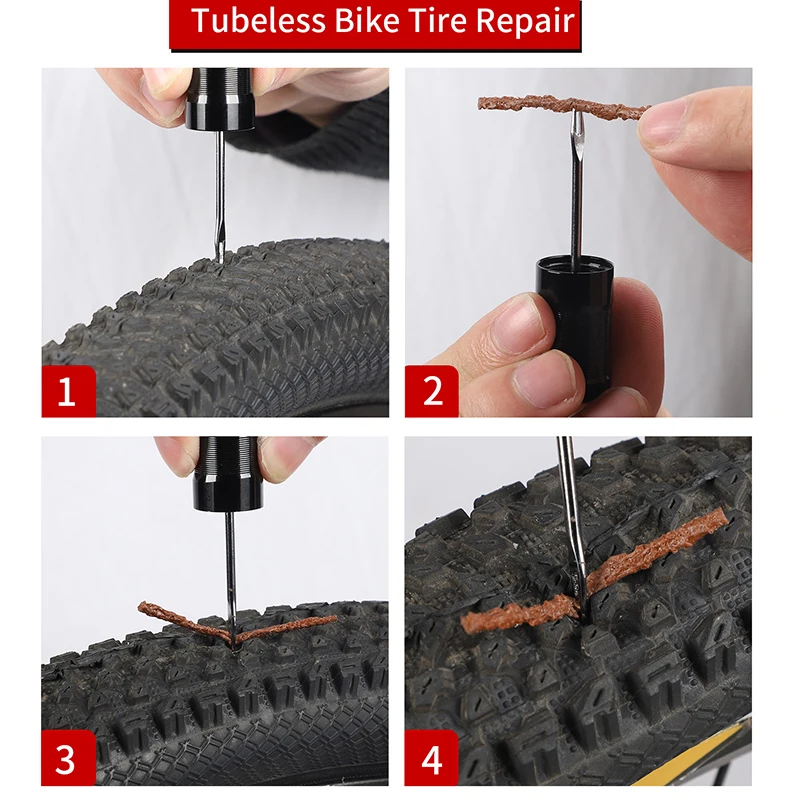
The sky’s the limit with track pumps. They basically all do the same job, some with a more premium feel than others.
From a budget Park Tool PFP8 to the absurdly expensive Silca Pista Plus, you’ll be able to find something that suits your needs.
Mini pumps work but are a lot more frustrating to use. Again, there are lots of options available from mini track-style pumps to tiny pumps that will fit in a jersey pocket. We tend to prefer mini pumps with a hose because that reduces stress (and potential damage) on the valve.
Two of our favourites have been the Truflo TIO Road and the Lezyne Micro Floor Drive HP.
One other possibility for your inflation needs is a CO2 inflator. These use compressed carbon dioxide in a small cartridge to inflate or top up a tyre really quickly. Not something you would want to use on a regular basis, but perfect for an emergency repair.
The first thing to do is to attach your pump to the valve.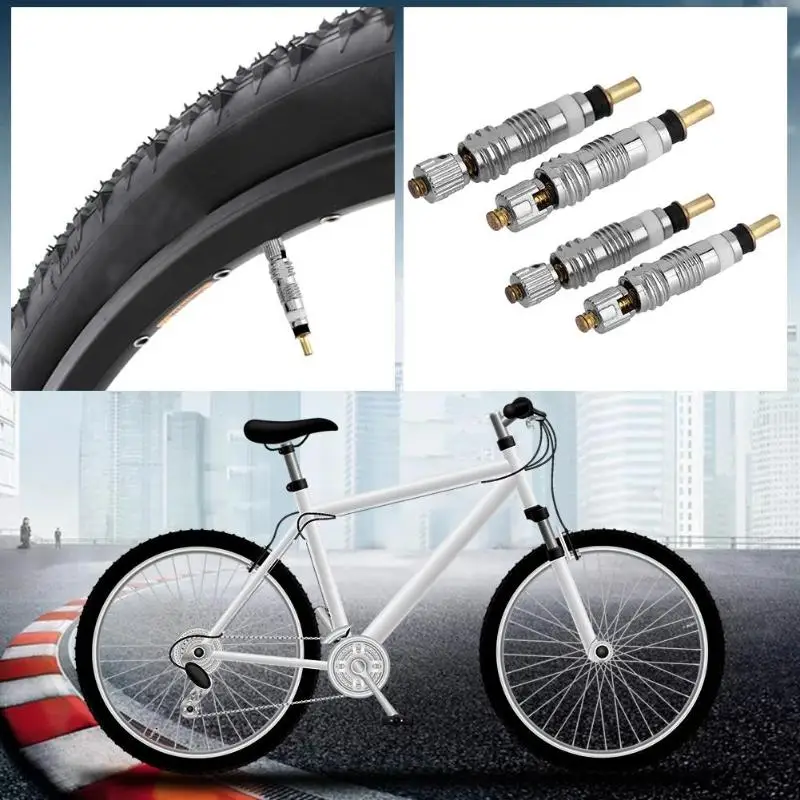
Remove the valve cap, and regardless of valve type, we find it’s good to release just a little hiss of air to ensure the valve isn’t stuck and opens and closes cleanly. Either thread-on the chuck or push it on and lock it.
If your tyre is completely flat it may initially be a bit of a struggle to fit the chuck because the valve has a tendency to push back into the rim. Simply hold the valve from behind by pushing on the outside of the tyre so that you can lock the chuck on properly.
The lockring on Presta valves (if fitted) can also help, preventing the valve from disappearing by holding it in place for you.
The connection to the valve should be air-tight. A little escaping air is normal when attaching the pump, but shouldn’t continue for long. If it does, remove and reattach the chuck. If it continues to be a problem it may be worth checking the rubber seal in the chuck to see if it is worn out and needs replacing.
Remember to be gentle with the valves – they’re delicate. That’s especially the case if you’re using a mini pump without a hose.
That’s especially the case if you’re using a mini pump without a hose.
Make sure to brace the pump with your hand wrapped around the spokes or tyre to avoid transferring too much of the pumping force to the valve, which could lead to damage.
When you start pumping make sure to use the full stroke of the pump. You’ll find that the majority of the stroke is taken up compressing the air to the point where it will then be pushed into the tyre.
If you don’t use the whole length of the pump, the air won’t be pushed out of the bottom – you need to generate overpressure in order to move the air from the pump to the tyre. Instead, you’ll just end up with the shaft bobbing around doing nothing.
With a track pump, don’t just use your arms, use your body weight for the downstroke and pumping will become a lot easier.
You may sometimes find that the pump doesn’t seem to hold pressure, especially when inflating the tyre from completely flat. This may especially be the case with an older pump where seals may be slightly sticky.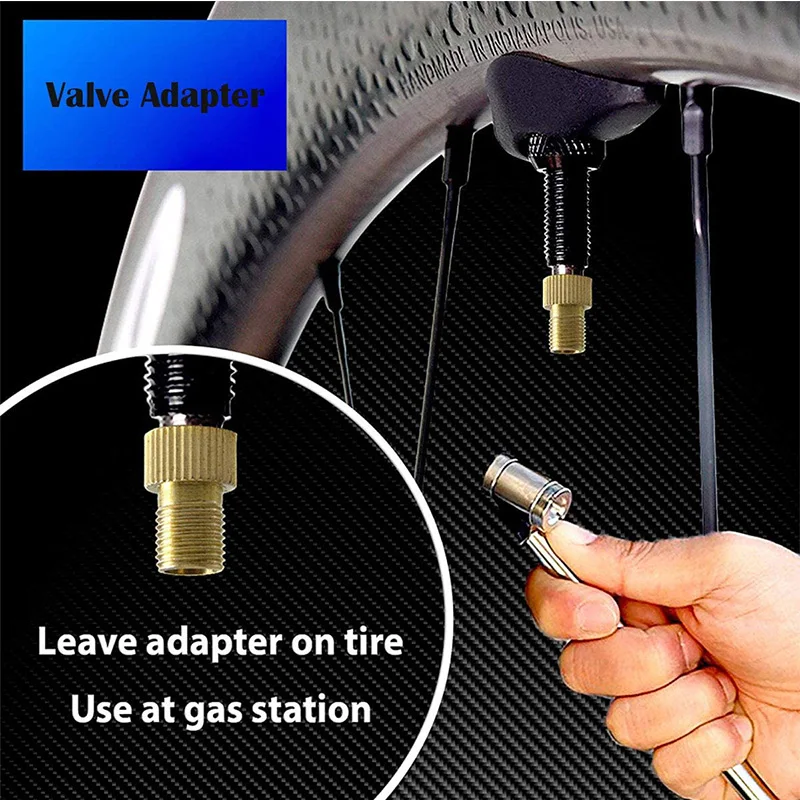
We find it helps to pump vigorously initially, to generate enough back-pressure (i.e. pushing back from the tyre side) in the system to ensure that valves are actuated properly and seal up, in turn inflating the tyre. Keep on going until you get the right pressure.
When removing the chuck from the valve there is usually an audible hiss of air being lost. This is usually from the pump rather than the valve side. Pressured air in the hose and chuck is just escaping.
A pump gets the air in your tyre. The operating principle is simple; you increase the pressure inside the pump until it exceeds that inside the tyre. This ‘overpressure’ forces air into the tyre, increasing its pressure too.
A pump is just a manually actuated piston. On a pump’s downstroke, a check valve (allows air-flow in one direction) seals the piston chamber, resulting in air being pressurised as the pump is compressed. That pressure increases until it exceeds that inside the tyre.
At this point, a second one-way valve will allow air to flow from the pressurised pump chamber into the tyre. You extend the pump again, the check valve opens to refill the chamber with air and you repeat the process.
To prevent the pressure in the tyre leaking back out, the second check valve at the base of the pump closes. If it wasn’t there, the pump would just shoot open again.
Presta valves will close automatically, but the sprung Schrader valves are usually held open by a pin in the pump valve attachment (this means you don’t need any extra effort when pumping to overcome the pressure exerted by the spring.)
The head of the pump is also known as the chuck.Oliver Woodman / Immediate Media
The chuck is the part that attaches the pump to the valve and forms an airtight seal over the valve. One of two designs exist: threaded or push-on with a locking lever. Most pumps nowadays are also adaptable to either Schrader or Presta valves.
They will either feature two different attachment points or an adjustable chuck that can be changed to suit both types.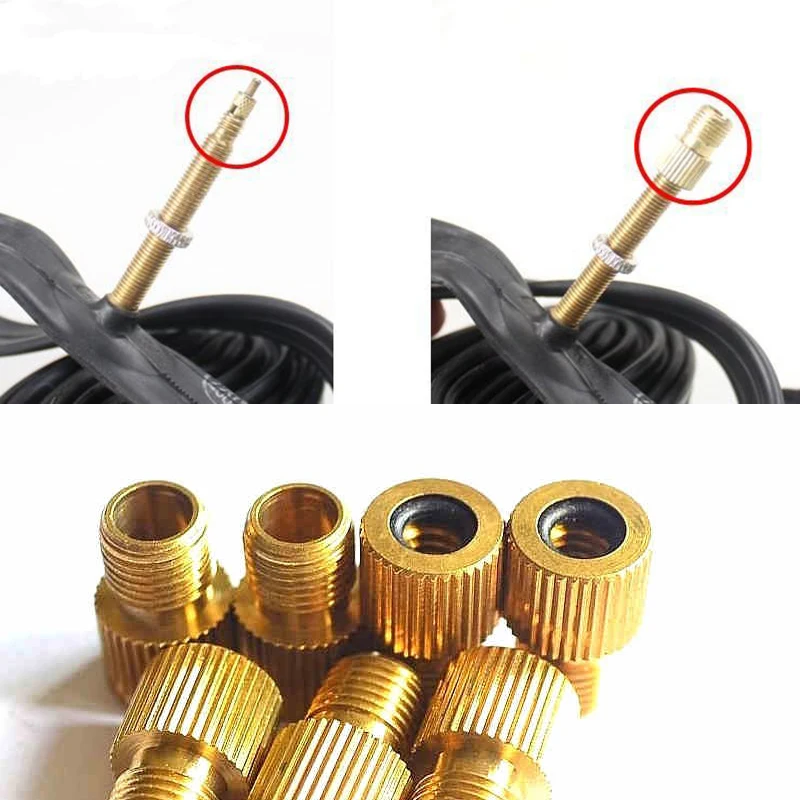
For larger pumps (and many mini-pumps too) the chuck is often on a hose, preventing your pumping force from damaging the valve.
Pumps will often include a pressure gauge to check the pressure inside your tyre.
The right tyre pressure is perhaps one of the most contentious subjects, but there are definitely a few guidelines that you can use.
As a general rule, your tyre should be solid enough to prevent the tyre deflecting all the way to the rim, though compliant enough to provide some suspension – after all, the beauty of a pneumatic tyre is that you don’t have to have a bone-jarringly hard ride.
Most tyres will have a minimum and maximum pressure rating printed on the side. It’s advisable not to go under or over those limits because manufacturers have specified them for a reason. Of course, that means there’s still a lot of room to play with pressure and what works for you.
For mountain bikes the problem is relatively easier, with the usual aim being to improve traction, cornering and shock absorption.
As a general rule, riders try to run as low a pressure as possible without having it so soft that the tyre squirms under cornering load or deflects enough for damage to occur to the rim.
For road bikes it becomes a little more complicated because along with traction and comfort, rolling resistance (how efficiently a tyre rolls) is a major consideration as well.
Contrary to what many assume, the new school of thought seems to suggest that harder is not necessarily faster.
On all but the smoothest of surfaces, a hard tyre will not have as much suspension, and instead of the tyre being able to deflect and conform to irregularities – keeping the bike moving forward – you will get bounced around.
On all but the flattest of surfaces softer tyre pressures can provide more comfort and be more efficient.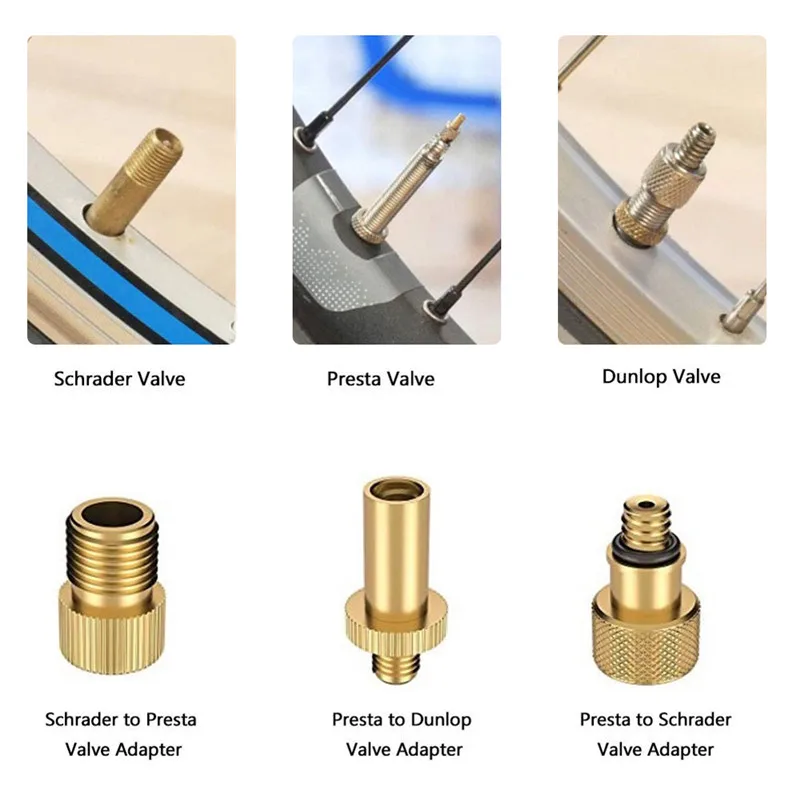
A tyre pressure drop chart.Frank Berto (Bicycle Quarterly)
The most comprehensive research into this was underatken by Frank Berto, who put together a tyre pressure inflation chart.
This testing determined that a 20 per cent tyre drop (the amount the tyre compresses when load is applied, measured by the height from the ground to the rim) was the optimum balance.
Incidentally, some manufacturers recommend a similar level of tyre drop, though the figure is open to some debate.
This value does provide a good starting point to experiment with tyre pressures. The chart looks at individual wheel load – i.e. your and your bike’s weight on each wheel (40 per cent front / 60 per cent rear is a good starting point) – and calculates the pressure for each accordingly.
You need not always get your pump/gauge out to check for tyre pressure.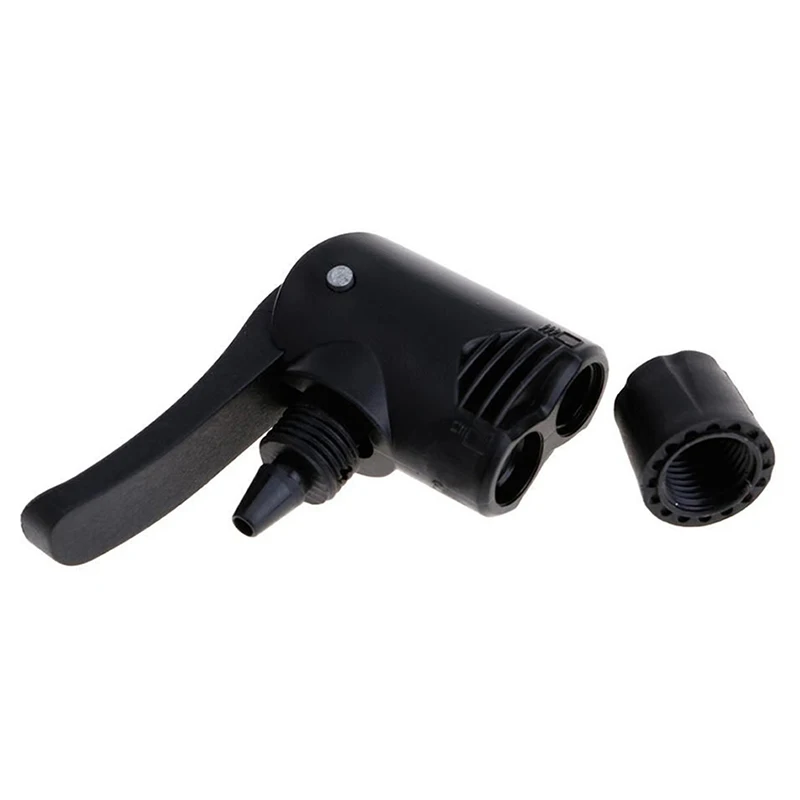 BikeRadar / Immediate Media
BikeRadar / Immediate Media
It’s a good idea to check your tyres before each ride. Usually, that just involves giving them a squeeze by hand to check the pressure.
No, it’s not super accurate, but you’ll quickly get a feel for the pressure in your tyres and be able to tell whether they need pumping up or not.
If you start to get really nerdy about it, you may end up investing in a pressure gauge, which can read the pressures in your tyres very accurately.
That’s especially helpful for mountain bikes where a few psi can make a large difference to handling and grip, but equally applicable on a road bike to find the exact pressure that works for you.
BikeRadar provides the world's best riding advice. We're here to help you get the most out of your time on the bike, whether you're a road rider, mountain biker, gravel rider, cycle commuter or anything in between. You can expect the latest news and features, in-depth reviews from our expert team of testers, impartial buying advice, how-to tips and plenty more.
4.5/5 - (2 votes)
It may be elementary, but being able to inflate bike tires is an essential skill for any cyclist.
Many of you already know how to do this, but for those who don't, the different types of valves, pumps, and more importantly, how much pressure to inflate your tire can be a little overwhelming. Let us help you through this process.
Contents
Pneumatic tires were invented to overcome the harsh "ride quality" of massive wheels.
The air inside acts like a spring, giving you suspension and allowing the tire to adapt to the terrain for better traction.
Tire inflation is a quick job that can easily improve your driving pleasure. Incorrect tire pressure will adversely affect cycling and make it more prone to punctures.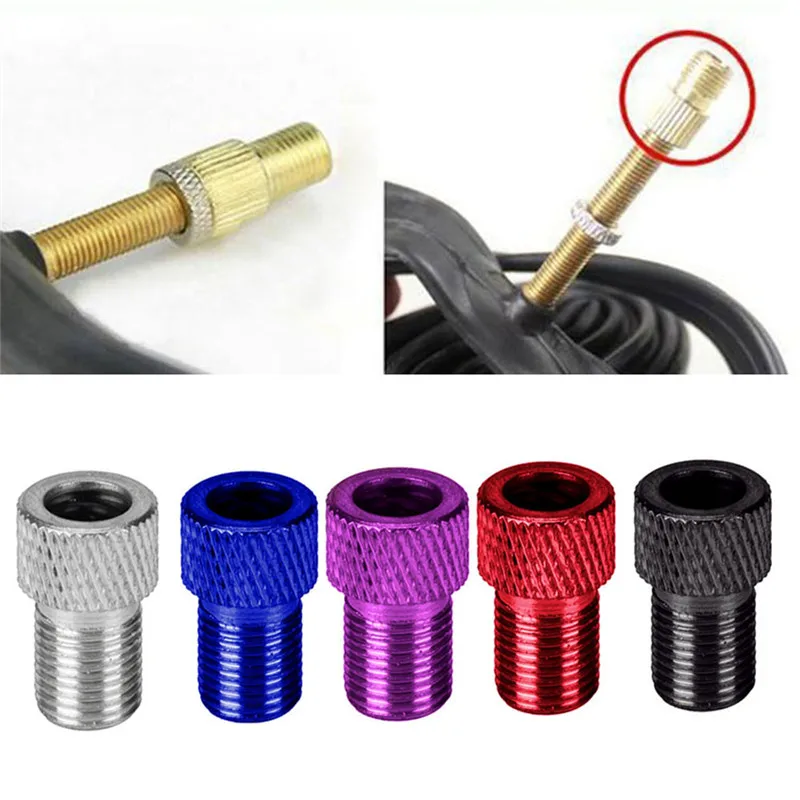
If you've never repaired a puncture before, you may not have thought about how your tires hold air in.
The vast majority of bikes will use a tube. It's a donut-shaped airtight tube that sits inside the tire with the inflation valve you see on the outside.
Inflated tire rests on the ground and provides puncture protection.
You may have heard of tubeless tires which do not have a tube but use a special rim and tire to seal air without using a tube. This usually requires a tubeless sealant, which is a liquid that plugs any air outlets.
Tubeless tires are more commonly used on mountain bikes, but the technology is moving to road bikes.
Tubeless sealant also seals punctures, and no tube means much less risk of pinching flats - that's when your inner tube gets pinched by the rim, causing a puncture. Thus, tubeless tires can run at lower pressures than inner tube tires to improve comfort, speed, and traction.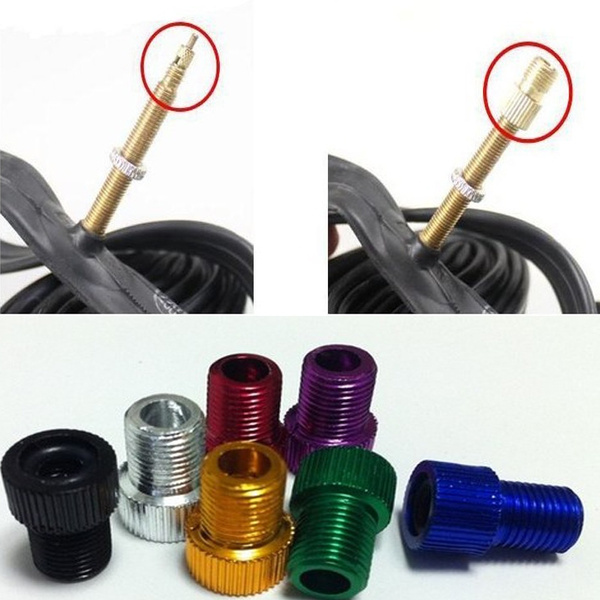
At the highest level, you also get tubular tires. They are essentially a tire with a tube built into it, but they are rarely seen or used outside of professional racing.
Inflating tires to the correct pressure is an important part of bike maintenance.
Running tires at too high or too low pressure can be potentially dangerous and can also affect your bike's handling.
Later we will discuss the correct pressure, but for now let's look at possible problems.
An under-inflated tire will reduce your efficiency and leave you vulnerable to annoying punctures.
If you drive with tires at too low pressure, the tire may wear out prematurely. Excessive sidewall deflection can lead to carcass cracking and tire brittleness. This can eventually lead to tire blowout.
Excessively low pressure also increases your susceptibility to punctures and can even cause your tires to literally jump off the rim if you turn at speed (the pressure inside is what keeps your tire on the rim).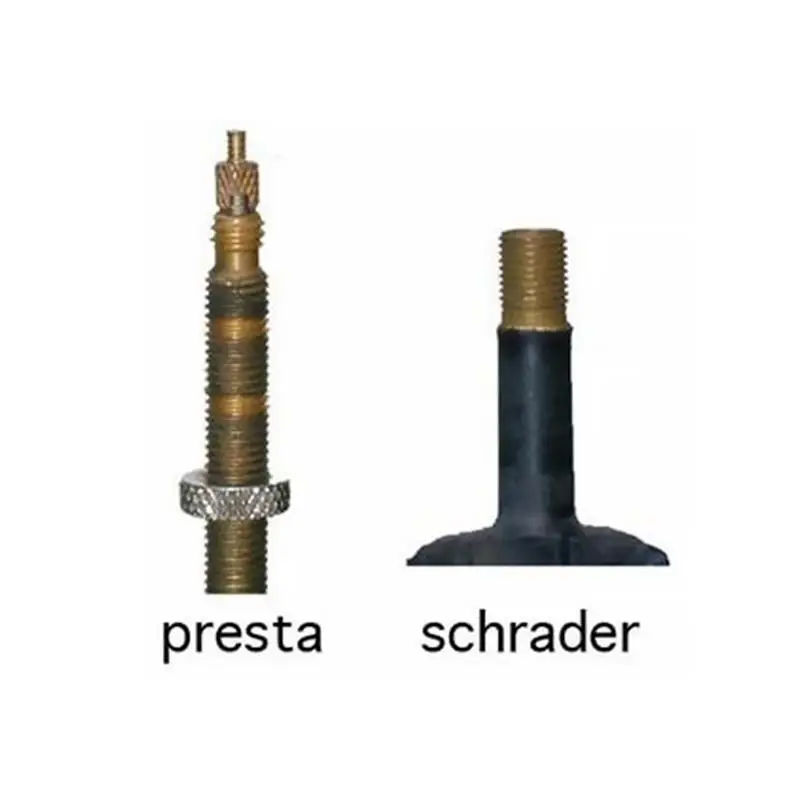
Damage can also be caused by tire deflection up to the rim. This can lead to dents or cracks, which can compromise your wheel and require a costly replacement.
Conversely, too high pressure can cause the tire to come off the rim with explosive consequences. This pressure can also compress the wheel because if it is too high, the compressive force on the wheel can be too great.
From a drivability point of view, low pressure can lead to poor drivability due to the tire squirming under load. Your bike will be difficult to control and will be slow and sluggish.
On the other hand, too much pressure can lead to poor traction and a rough ride, leading to fatigue and in turn poor handling.
There are two possible reasons for your flat tire. Either you have a puncture or your tire has deflated over time.
The adhesiveless patches are great for a quick fix, while the more traditional kit is a versatile option when you have a bit more time.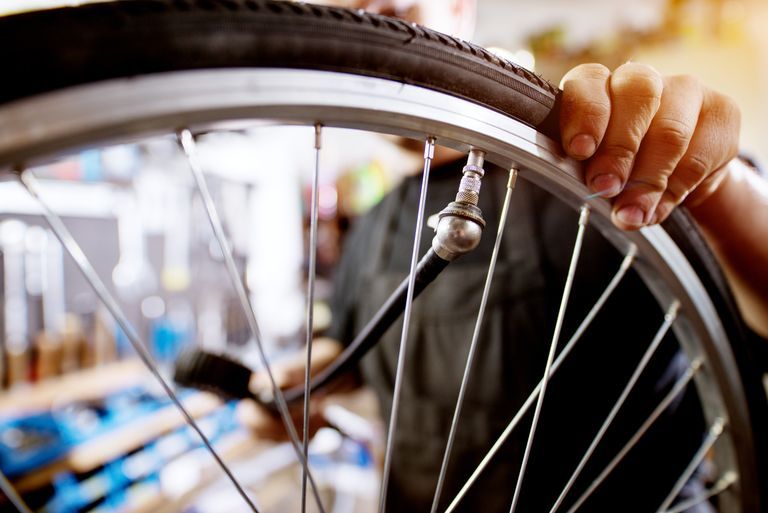
All tire systems will bleed slowly because the tubes are not completely sealed. For example, standard butyl tubing retains air fairly well compared to lightweight latex tubing, which bleeds relatively faster. Even tubeless setups will slowly leak air.
Old tubes will pass more air than new ones, so if they haven't been replaced in a while, it's worth taking a look at them. It is less likely, but also possible (especially on older tubes), that the valve is no longer sealing properly.
The best way to check what's going on is to try pumping up the tire. If it's holding air, you probably have nothing else to do. If this does not happen, most likely you have a puncture.
If air leaks slowly overnight, you have a slow puncture or just an old tube that needs to be replaced.
The first thing you need to know before inflating a tire is the valve type.
The valve is the key part that keeps the air in the tire but also allows the tire to be inflated (or deflated).
Schrader valve also used for car tires.
Schrader valves are more commonly found on low end bikes and, in the past, mountain bikes. The same valves are used on car tires.
The valve assembly is a hollow tube with a spring loaded valve that automatically closes and screws into the outer housing. The pin comes out of the valve and is usually flush with the end of the outer tube. This pin can be pressed to release air.
The dust cap on Schrader valves is an important part of the design that can help close the valve completely if it is not fully sealed. Essentially, it provides a secondary "backup" seal.
The spring-loaded design of the valve is slightly susceptible to contamination from dirt or sand, so it is important to protect it as well.
These Presta valves are longer and narrower than the Schrader type valve.
Presta valves are only found on bicycles.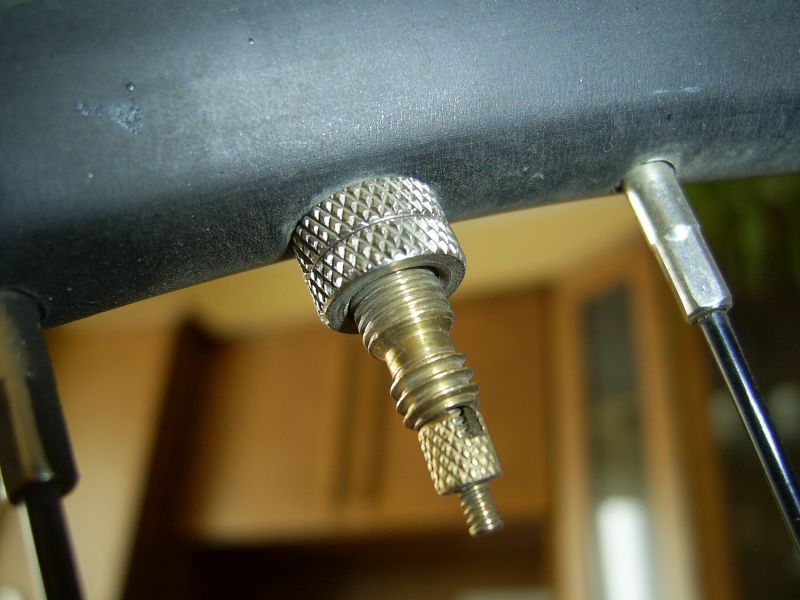
They originated on road bikes, where a narrower valve (6mm versus 8mm for the Schrader) meant a smaller valve hole (usually the weakest part of the rim).
These days you can find them on both mountain bikes and road bikes. Instead of using a spring, the valve is held in place by a nut that holds it closed, although the valve itself seals "automatically" when the pressure inside the tire forces it to close.
With a schrader valve you can simply press the pin to release the air, but with a Presta valve you first need to unscrew the small lock nut. Don't worry about the nut coming off the end of the valve body because the threads are rounded to prevent this from happening.
There seems to be a myth that Presta valves handle high pressures better - this is probably not true given that there are Schrader valves that can handle many hundreds of psi (much more than you'll ever need). in your tire).
However, Presta valves are definitely a bit more fragile than Schrader valves. It is very easy to strike the threaded inner body of the valve, bend it or break it, so care must be taken. However, valve cores are easily replaced with standard tools.
It is very easy to strike the threaded inner body of the valve, bend it or break it, so care must be taken. However, valve cores are easily replaced with standard tools.
Compared to Schrader valves, this requires a special tool.
Presta valves can be supplied with a retaining ring that secures the valve body to the rim. This can make them easier to inflate. The dust cap is not essential to sealing it, but helps keep the valve clean.
The only other type of valve you may encounter is the Dunlop (also known as Woods) valve. The base diameter is the same as the Schrader valve but can be inflated with the same pump as the Presta valve.
They are very popular on city streets in Europe and elsewhere in the world, but you are unlikely to find one in the UK or the US.
The tubeless valve is difficult to distinguish from a regular Presta valve.
Valves for tubeless tires are attached directly to the rim, not part of the inner tube.
Most often they are of the Presta type, but there is also a Schrader.
If you have a Schrader type valve like the one shown above, the first thing you need to do is remove the dust cap (if there is one).
Simply unscrew the cap counterclockwise to open the valve.
Now attach the pump head.
Inflate the tire to between the minimum and maximum indicated on the tire sidewall and remove the pump. Ready!
If your bike has a Presta type valve like this one, you will first need to remove the plastic valve cover (if any).
The plastic cover will open another threaded valve cover.
Loosen the threads, but be careful not to damage them in the process.
Now attach the pump head of your choice to the open valve and inflate the tire to between the minimum and maximum pressure indicated on the sidewall of the tire.
Inflate the tire to the desired pressure and remove the pump.
Finally, close the valve by turning it clockwise and install the plastic valve cover.
If you have a tubeless tire or a tube with sealant inside, there are a few extra steps you should take to avoid contaminating your pump.
Turn the wheels so that the valves are at the bottom and leave for a few minutes to allow the sealant to drain.
Turn the wheels so that the valves are up and inflate the tires. The same thing happens when the tires are deflated to prevent the sealant from splattering all over the place.
We would say that if you can only own one type of pump, get a foot pump for home use because it is efficient, fast and easy to use.
However, there is no doubt that having an extra mini-pump for the duration of the trip is very useful - otherwise you risk getting stuck on the side of the road in case of a puncture.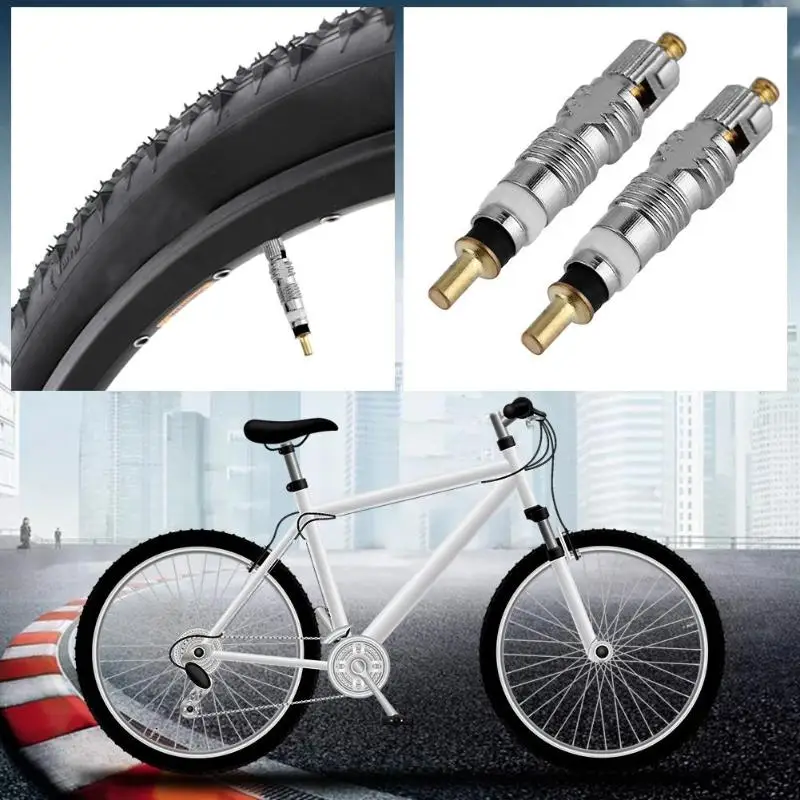
There is no limit to pump selection. Basically, they all do the same job, some of them look better than others.
From budget to outrageously expensive, you'll find something to suit your needs.
Mini pumps work but are much more difficult to use. Again, there are many options that will fit in your pocket. We prefer hose mini pumps because it reduces stress (and potential damage) on the valve.
Another option for your inflation needs is the CO2 pump. They use compressed carbon dioxide in a small cartridge to inflate or fill a tire very quickly. Not something you would like to use on a regular basis, but perfect for emergency repairs.
The first thing to do is attach the pump to the valve.
Remove the valve cap, and regardless of valve type, we find it useful to let some air out to make sure the valve doesn't stick and opens and closes cleanly.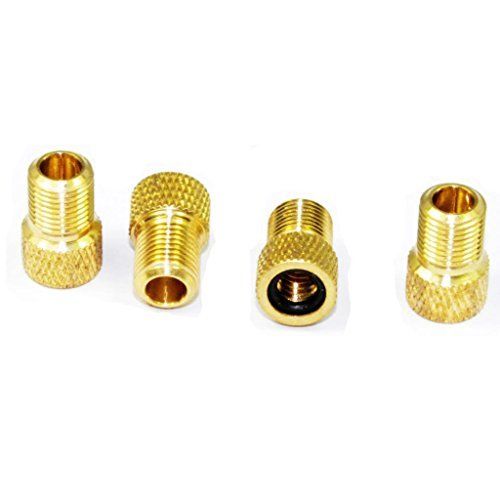 Screw on the chuck, or push it in and lock it.
Screw on the chuck, or push it in and lock it.
If your tire is completely flat, it may be difficult to install the cartridge at first because the valve tends to move back into the rim. Simply hold the valve at the back while pressing down on the outside of the tire so you can lock the cartridge in correctly.
The locking ring on Presta valves (if equipped) can also help by preventing the valve from dropping, holding it in place for you.
The connection to the valve must be tight. It is normal for a small amount of air to escape when installing the pump, but this should not last long. If so, remove and reinstall cartridge. If the problem persists, it might be worth checking the rubber seal in the chuck to make sure it's not worn out and needs to be replaced.
Remember to be careful with the valves - they are fragile. This is especially true if you are using a mini pump without a hose.
Be sure to secure the pump by hand to avoid applying too much force to the valve, which could cause damage.
When you start pumping, make sure you use the full stroke of the pump. You will find that most of the stroke is compressing the air to the point where it will be forced into the tire.
If you don't run the pump all the way, the air won't be forced out of the bottom - you need to pressurize to move the air from the pump to the tire. Instead, you'll just end up wasting your energy to no avail.
With a floor pump, don't just use your hands, use your body weight to push down and pumping becomes much easier.
Sometimes you may find that the pump does not hold pressure, especially when inflating a tire from a fully deflated position. This may especially apply to older pumps where the seals may be slightly worn.
We find that vigorous inflation first helps to create enough back pressure (i.e. tire side rebound) in the system to ensure that the valves actuate properly and seal the tire. Keep going until you get the right pressure.
When the cartridge is removed from the valve, a hiss of air loss can usually be heard.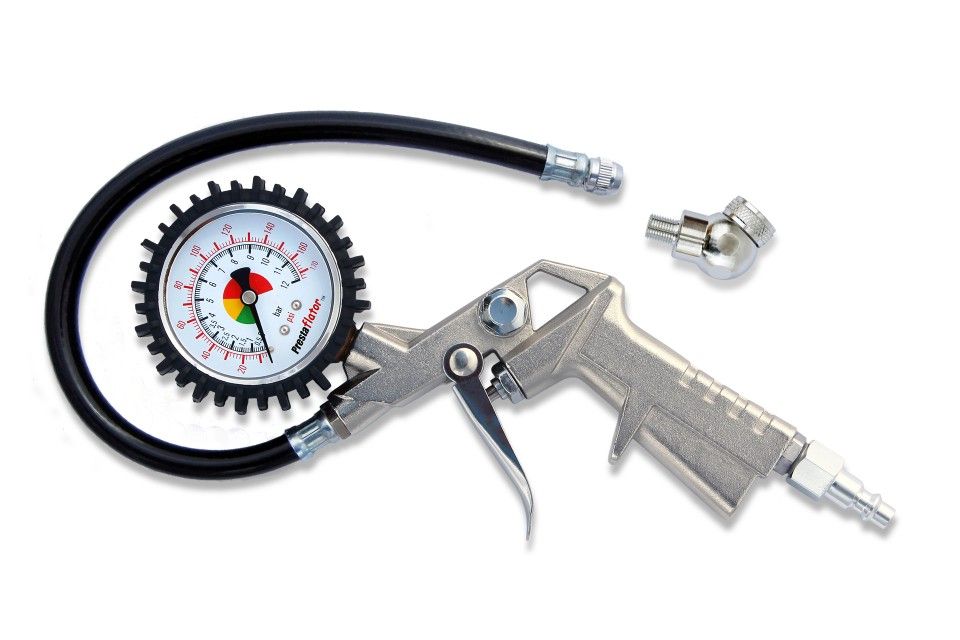 This usually happens on the pump side, not the valve side. The pressurized air from the hose and cartridge just comes out.
This usually happens on the pump side, not the valve side. The pressurized air from the hose and cartridge just comes out.
The pump pumps air into your tire. The principle of operation is simple; you increase the pressure inside the pump until it exceeds the pressure inside the tire. This "overpressure" forces air into the tire, which also increases tire pressure.
The pump is simply a manually operated piston. As the pump moves down, a check valve (allowing air flow in one direction) seals the piston chamber, causing the air pressure to rise as the pump is compressed. This pressure increases until it exceeds the pressure inside the tire.
At this point, the second one-way valve will allow air to flow from the pressure pump chamber into the tire. You extend the pump again, the check valve opens to fill the chamber with air, and you repeat the process.
To prevent leakage of tire pressure, the second check valve at the base of the pump closes. If it wasn't there, the pump would just open up again.
If it wasn't there, the pump would just open up again.
Presta valves close automatically, but spring-loaded Schrader valves are usually held open by a pin in the valve mount (meaning you don't need any additional inflation force to overcome the pressure exerted by the spring).
The pump head is also known as the cartridge.
The cartridge is the part that attaches the pump to the valve and forms an airtight seal over the valve. There is one of two designs: threaded or push-on with a locking lever. Most pumps nowadays can also be adapted to Schrader or Presta valves.
They will either have two different mounting points or a cartridge that can be changed for both types.
For large pumps (and many mini pumps too) the cartridge is often on the hose, preventing your force from damaging the valve.
Pumps are often equipped with a tire pressure gauge.
Proper tire pressure is perhaps one of the most controversial topics, but there are a few guidelines you can follow.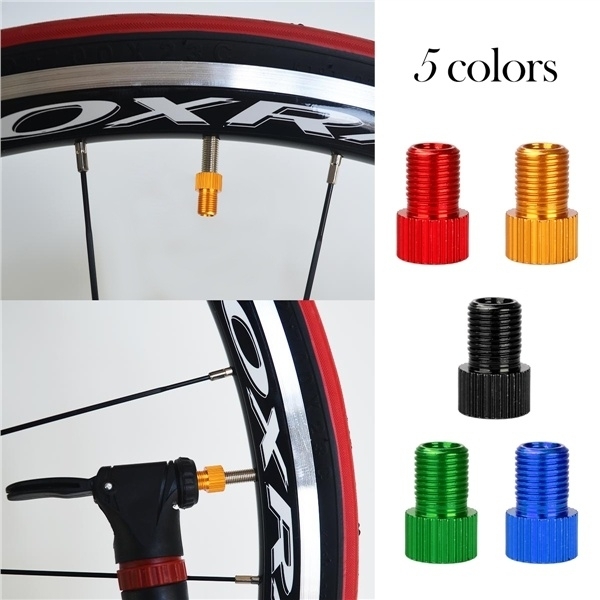
As a rule of thumb, your tire should be strong enough to prevent it from flexing all the way to the rim, yet malleable enough to provide some suspension - after all, the beauty of a pneumatic tire is that you don't have an incredibly hard ride.
Most tires have a minimum and maximum pressure marked on the side. It is advisable not to go below or exceed these limits, because manufacturers have indicated them for a reason. Of course, this means there is still plenty of room to play around with the pressure and what works for you.
For mountain bikes, the problem is relatively easier to solve, as the goal is usually to improve traction, cornering, and damping.
As a rule of thumb, riders try to run as low pressure as possible without making it so soft that the tire squirms under load in a corner or flexes enough to damage the rim.
Things get a little more complicated for road bikes because along with grip and comfort, rolling resistance (how efficiently the tire rolls) is an important factor.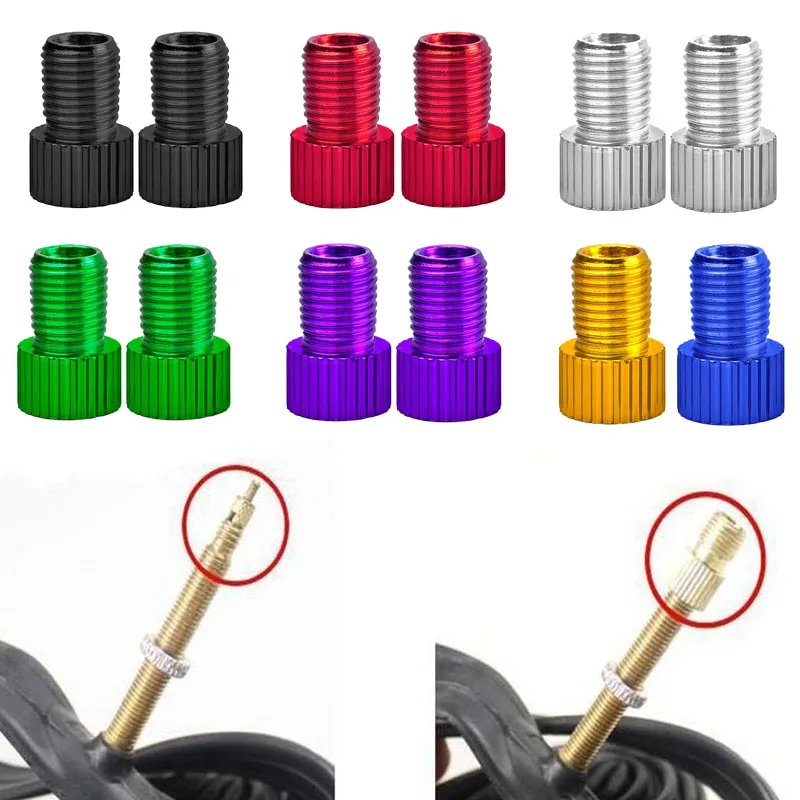
On all but the smoothest surfaces, a stiff tire will have no advantage, and instead of the tire being able to lean and conform to the bumps, causing the bike to move forward, you will bounce.
On all but the flattest surfaces, lower tire pressure can provide greater comfort and efficiency.
Testing showed that 20 percent tire compression (the amount of tire compression when a load is applied, measured by the height from the ground to the rim) was the optimal balance.
Incidentally, some manufacturers recommend the same level of tire compression, although this figure is somewhat controversial.
This value is indeed a good starting point for experimenting with tire pressures.
You don't always have to remove the pump/gauge to check tire pressure.
We recommend that you check your tires before every ride. Usually, you just need to squeeze them with your hand to check the pressure.
No, this is not very accurate, but you will quickly feel the pressure in your tires and be able to determine whether they need to be inflated or not.
If you get serious about this, you can end up with a pressure gauge that can read your tire pressure very accurately.
This is especially useful on mountain bikes where a few psi can make a big difference in handling and grip, but applies equally to a road bike to find the exact pressure that works for you.
You might be interested:
contents
Turn the wheel to access valve hands. Unscrew the screw plug at the top of valve . Place bicycle pump hose head along valve and apply firm pressure. Lift the locking tab on the side of the head to open the valve .
to to inflate tire with Presta valve it is necessary to open valve by turning the crown counterclockwise.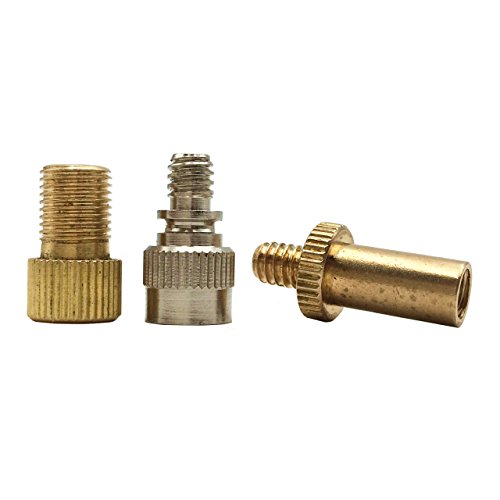 At the end of the process inflated , you must close it to prevent air leakage. This type valve A special nozzle is required for inflation.
At the end of the process inflated , you must close it to prevent air leakage. This type valve A special nozzle is required for inflation.
How to inflate covers in estac. serv? You put 40 lbs on the car and how you pump up you measure the pressure for your wheel with a "dometer", when you like it, you just remove the hose from the wheel and that's it; the machine will automatically turn off the air flow.
take the bomb bike and place its valve on the tire you are going to inflate .
...
Insert the pump into the tire valve.

Presta valve – how to inflate
Open fully, raise and lower the pump with each stroke. It is important to push the piston to the end of its stroke in order to force air into the tire. If you stop too soon, air will leak out of the pump instead of entering the tire.
From our point of view, fittings borrow son Top . Experience tells us that this type of armature It allows us to maintain pressure in our wheels for a longer time without having to refuel every time we hit the road.
to inflate una biconvex wheel , use an angle valve tip. The nozzle allows air to flow from the pump into the hose or tube.
How to connect the inflator.
Step-by-step instructions
The correct pressure will be no more than 9.5 bar, which is the maximum value to which we must inflate our tubes. A pressure of around 8-9 bar is what maximizes our ratio between friction and grip.
Pressure calculated for an average weight of approx.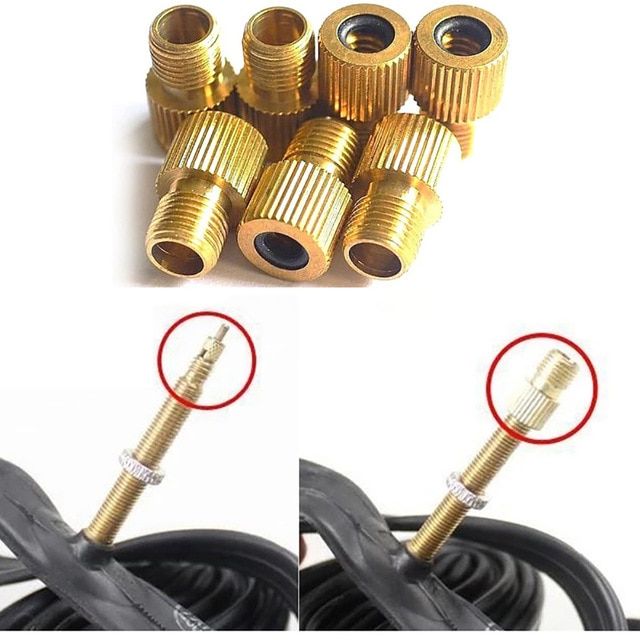 75 kg. bikes for folding trucks with 16" to 20" wheels typically 60 to 120 psi (4 to 8 bar) compared to 35 to 65 psi (2.5 to 4.5 bar) for bicycle traditional (city, mountain, hybrid…) from 26-28″.
75 kg. bikes for folding trucks with 16" to 20" wheels typically 60 to 120 psi (4 to 8 bar) compared to 35 to 65 psi (2.5 to 4.5 bar) for bicycle traditional (city, mountain, hybrid…) from 26-28″.
Las bicycles folding with wheels between 16″ and 20″ will require 4 to 8 rods. bikes traditional or mountain bikes with wheels between 26″ and 28″ will require 2.5 to 4.5 rods. bikes road with wheels 29″ will carry 7 to 9 strokes.
Use a Schrader valve (also called "American valve" or "Automotive valve"). This system consists of a central rod surrounded by a core. To press the rod, you will need a tool to help you release the air.